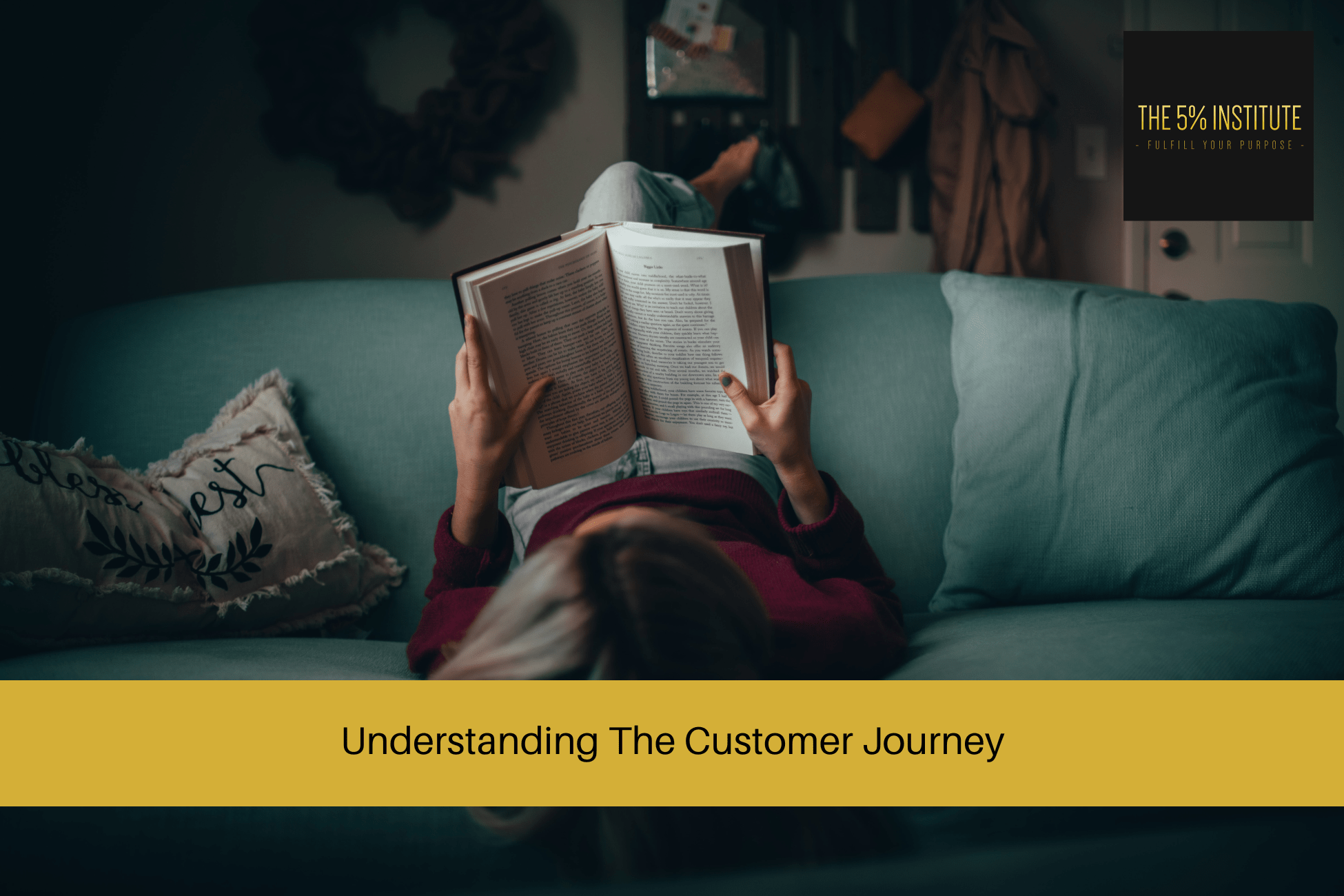
Understanding The Customer Journey
In today’s highly competitive business landscape, understanding the customer journey is crucial for any company that wants to thrive.
The customer journey refers to the entire process that a customer goes through, from the moment they become aware of a product or service to the point of making a purchase and beyond.
By gaining insights into this journey, businesses can optimize their marketing strategies, improve customer satisfaction, and ultimately drive revenue growth.
In this article, we will delve deep into the concept of the customer journey, exploring its different stages and providing valuable insights on how to enhance this experience for your customers.
1. The Importance of Understanding the Customer Journey
To create meaningful connections with your customers, it is essential to understand their journey.
By mapping out their experiences, pain points, and motivations at each stage, you can tailor your marketing efforts to address their needs effectively.
This understanding enables you to deliver a seamless and personalized experience, leading to increased customer satisfaction, loyalty, and advocacy.
2. Stage 1: Awareness
The first stage of the customer journey is awareness.
This is when potential customers become aware of your brand, product, or service.
It’s crucial to create a strong brand presence through various marketing channels such as social media, content marketing, search engine optimization (SEO), and advertising.
By utilizing these channels strategically, you can capture the attention of your target audience and generate interest in what you offer.
3. Stage 2: Consideration
Once customers are aware of your brand, they enter the consideration stage.
During this phase, they start evaluating their options and comparing different products or services.
It’s important to provide valuable content, such as informative blog posts, product comparisons, and customer reviews, to help them make informed decisions.
Building trust and showcasing the unique value proposition of your offering are key elements in this stage.
4. Stage 3: Decision
The decision stage is where the customer makes the final purchasing decision.
At this point, you need to ensure a smooth and frictionless process by offering a user-friendly website, simplified checkout process, and transparent pricing.
Providing social proof, such as testimonials or case studies, can further boost confidence in the decision-making process.
5. Stage 4: Post-Purchase Experience
The customer journey does not end with a purchase. In fact, the post-purchase experience plays a crucial role in customer retention and advocacy.
This stage involves providing exceptional customer service, offering relevant upselling or cross-selling opportunities, and nurturing ongoing relationships through personalized communication.
By exceeding customer expectations after the purchase, you can turn satisfied customers into brand advocates.
6. Analysing and Improving the Customer Journey
To optimize the customer journey, it’s essential to continuously analyse and improve each stage.
By gathering and analysing data, such as customer feedback, website analytics, and sales metrics, you can identify areas for improvement.
A/B testing, customer surveys, and heatmaps are valuable tools for gaining insights into customer behaviour and preferences.
7. Integrating Customer Feedback into the Journey
Customer feedback is a goldmine of information that can help shape the customer journey.
Actively seek feedback through surveys, social media listening, and customer support interactions.
Use this feedback to identify pain points, address concerns, and make necessary adjustments to improve the overall experience.
8. Personalization and the Customer Journey
Personalization is a powerful strategy to enhance the customer journey.
By leveraging customer data, you can tailor your marketing messages, product recommendations, and communication channels to individual preferences.
Personalization creates a sense of exclusivity, making customers feel valued and understood.
9. Leveraging Technology for a Seamless Journey
Technology plays a vital role in delivering a seamless customer journey.
From artificial intelligence and chatbots to marketing automation and customer relationship management (CRM) systems, there are numerous tools available to streamline processes, provide real-time support, and track customer interactions.
Embrace technology to create a frictionless experience for your customers.
10. The Role of Content Marketing in the Customer Journey
Content marketing is an integral part of the customer journey. By creating informative and engaging content, you can attract, educate, and nurture potential customers at every stage.
Blog articles, videos, infographics, and social media posts can all contribute to building brand awareness, establishing authority, and guiding customers through their decision-making process.
11. Social Media and the Customer Journey
Social media platforms offer a unique opportunity to connect with customers throughout their journey.
By actively engaging with your audience, responding to inquiries, and sharing valuable content, you can build trust and foster meaningful relationships.
Utilize social media analytics to measure the effectiveness of your social media efforts and adapt your strategy accordingly.
12. Measuring the Effectiveness of the Customer Journey
Measuring the effectiveness of the customer journey is crucial for ongoing optimization.
Key performance indicators (KPIs) such as conversion rates, customer lifetime value, customer satisfaction scores, and repeat purchase rates provide valuable insights into the success of your customer journey strategy.
Regularly monitor these metrics and adjust your approach based on the data.
13. The Future of Customer Journey Mapping
As technology continues to evolve, so will the customer journey.
The rise of artificial intelligence, voice search, augmented reality, and virtual reality will introduce new touchpoints and opportunities for businesses to engage with customers.
Stay informed about emerging trends and adapt your customer journey accordingly to stay ahead of the competition.
14. Conclusion
Understanding and optimizing the customer journey is crucial for businesses that aim to build strong customer relationships, drive sales, and foster loyalty.
By mapping out each stage of the journey, leveraging personalization, embracing technology, and continuously analysing and improving the experience, you can create a seamless and delightful journey for your customers.
Remember, the customer journey is not a one-time effort but an ongoing process that requires attention and adaptation.
By prioritizing the customer experience, you set yourself up for long-term success.
FAQs
1. What is the customer journey?
The customer journey refers to the entire process a customer goes through, from initial awareness of a product or service to the final purchase and beyond.
It involves different stages, including awareness, consideration, decision, and post-purchase experience.
2. Why is understanding the customer journey important?
Understanding the customer journey helps businesses tailor their marketing efforts, improve customer satisfaction, and drive revenue growth.
It allows companies to address customer needs effectively, create personalized experiences, and build long-lasting relationships.
3. How can I optimize the customer journey?
To optimize the customer journey, gather and analyse data, integrate customer feedback, personalize interactions, leverage technology, and continuously improve each stage of the journey.
Regularly measure key metrics and adapt your strategy based on the insights gained.
4. What role does content marketing play in the customer journey?
Content marketing plays a crucial role in the customer journey by attracting, educating, and nurturing potential customers.
Informative and engaging content helps build brand awareness, establish authority, and guide customers through their decision-making process.
5. How can social media contribute to the customer journey?
Social media platforms provide opportunities to engage with customers throughout their journey.
By actively interacting, sharing valuable content, and responding to inquiries, businesses can build trust, foster relationships, and influence purchase decisions.
Want To Close Sales Easier?
Are you committed to closing sales a lot easier, and consistently?
If so, you should check out our self-paced and affordable online sales training program; The 5% Sales Blueprint.
It’ll give you everything you need to close sales consistently.
To learn more, simply click on the link below for more information.
Our Online Sales Training Program – The 5% Sales Blueprint.



